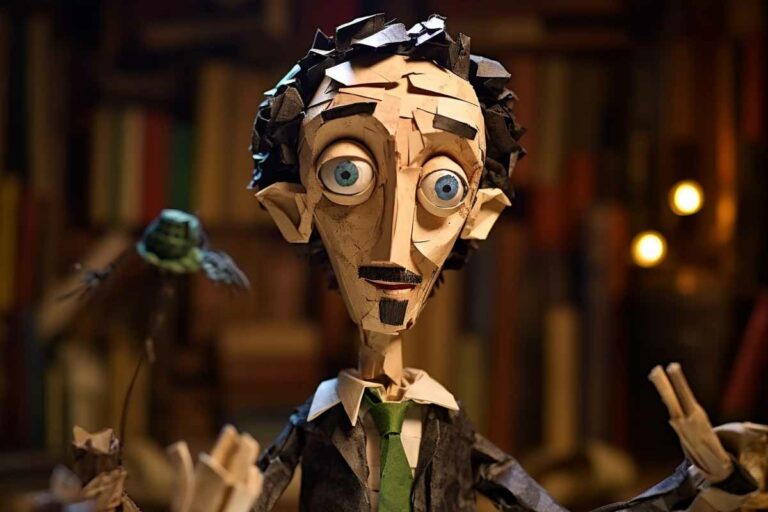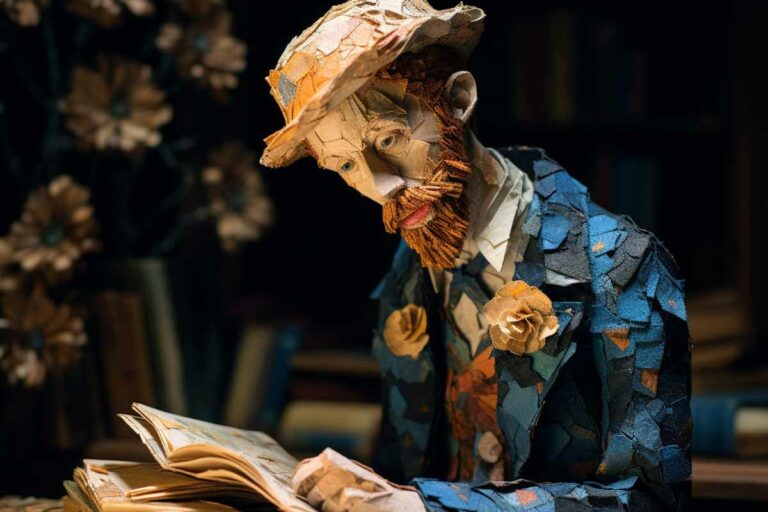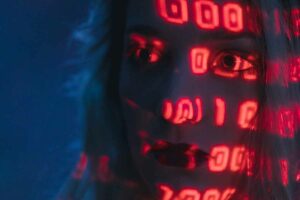In today’s rapidly evolving digital landscape, the boundaries between human creativity and technological innovation are becoming increasingly blurred. One area where this convergence is particularly evident is in the realm of graphic design, thanks to the advent of artificial intelligence (AI).
AI-powered graphic design tools have revolutionized how we approach visual communication, enabling designers to push the boundaries of their imagination and unlock new levels of creativity.
In this guide, we will explore the fascinating world where AI meets graphic design, delving into the possibilities and potential pitfalls that arise when machines become co-creators in the creative process.
So fasten your seatbelts as we embark on a journey through the captivating intersection of artificial intelligence and graphic design!
Table of Contents
What is artificial intelligence graphic design?
At first, artificial intelligence graphic design refers to the use of artificial intelligence technologies and algorithms in the creation, manipulation, and optimization of visual content.
By harnessing the power of AI, designers can automate certain aspects of their workflows, generate new design concepts, analyze data for insights, and enhance the overall efficiency and creativity in graphic design.
Example: Stunning album created with Midjourney by Ryan Campbell for Paper Mâché dolls made from pages of antique books in the style of famous artists.
What are the benefits of artificial intelligence in graphic design?
Artificial intelligence graphic design offers several benefits that can greatly improve the efficiency and effectiveness of the design process. Here are some key advantages:
1. Automation:
AI enables designers to automate repetitive and time-consuming tasks, such as resizing images, creating layouts, or applying consistent styles across multiple assets. This frees up designers’ time, allowing them to focus on more creative and strategic aspects of their work.
2. Improved Productivity:
By automating certain design tasks, AI can significantly increase productivity by reducing manual labor. Designers can accomplish more in less time and deliver projects faster without sacrificing quality.
3. Enhanced Creativity:
AI tools can generate design suggestions based on user input or analyze existing designs to provide alternative options. This can spark new ideas, inspire creativity, and offer fresh perspectives for designers.
4. Data-Driven Insights:
AI algorithms can gather and analyze large volumes of data related to user preferences, market trends, or brand performance. This enables designers to make informed decisions based on data-driven insights and create designs that better resonate with their target audience.
5. Consistency and Precision:
AI-powered tools ensure consistency in design elements like colors, typography, spacing, and alignment throughout a project. This helps maintain brand standards and produces professional looking outputs with precision.
6. Personalization:
AI allows designers to create personalized content at scale by leveraging user data to tailor designs according to individual preferences or demographic segments. This customization enhances user experiences and engagement.
7. Collaboration:
AI collaborative platforms enable real-time collaboration among team members regardless of their location. Designers can work together seamlessly, sharing feedback, making revisions simultaneously, and improving overall workflow efficiency.
Graphic Design Software Vs Graphic Design AI Software?
The graphic design software and graphic design AI software are serving different purposes and employ different technologies.
Graphic design software refers to traditional software applications that are designed specifically for graphic designers. Examples include Adobe Photoshop, Illustrator, and InDesign.
These tools provide a wide range of features and capabilities, allowing designers to create, edit, and manipulate visual elements such as images, illustrations, typography, and layouts. Graphic design software relies on the skills and creativity of the user to execute their designs.
On the other hand, graphic design AI software leverage artificial intelligence algorithms to automate certain aspects of the design process.
These tools often utilize machine learning techniques to analyze large amounts of data, predict trends, generate design variations, or offer suggestions based on user inputs.
AI graphic design tools can assist in tasks like image recognition, automated layout generation, color palette suggestions, or font pairing recommendations.
Additionally, graphic design software requires manual input from the designer and relies on their creative decisions, while AI graphic design tools aim to streamline certain tasks by automating them using AI algorithms.
However, it’s important to note that these two approaches can also be combined where designers use both traditional software and AI-powered software in their workflow.
What is the Best Graphic Design AI Software?
AI tools are revolutionizing the world of graphic design, making the process more efficient and innovative. They are providing endless possibilities for graphic designers to explore and visualize different concepts.
Some of the best ones are included in the following slider:
DreamStudio

Uizard

AutoDraw

Designs AI

Adobe Sensei

Canva

Fotor

Pixlr

Designhill AI

Midjourney
For more information, please check our review for the Best AI Graphic Design Generator Tools .
Will Artificial Intelligence replace graphic designers?
While Artificial Intelligence (AI) has the potential to automate certain aspects of graphic design, it is unlikely to completely replace graphic designers.
AI can excel at performing repetitive and data-driven tasks, such as resizing images or generating basic designs based on predefined templates. However, the role of a graphic designer extends beyond these tasks.
Graphic designers bring a unique human touch to their work that involves creativity, strategic thinking, empathy, and storytelling. They possess the ability to understand client requirements, interpret ideas, and communicate visually in a way that resonates with target audiences. These qualities cannot be replicated by AI algorithms alone.
Instead of replacing designers, AI is more likely to augment their capabilities. By automating repetitive tasks and offering intelligent design suggestions, AI can streamline the design process and enhance productivity. This allows designers to focus on higher-level creative thinking and problem-solving aspects of their work.
Ultimately, rather than seeing AI as a threat, graphic designers can embrace it as a powerful tool that complements their skills and enables them to achieve even greater results.
What Is the future of Artificial Intelligence Graphic Design?
The future of artificial intelligence (AI) in graphic design is promising and holds great potential. Here are a few key aspects that we can expect to see in the future:
1. Automated Design Assistance: AI will continue to enhance design workflows by offering intelligent suggestions, automating repetitive tasks, and providing real-time feedback during the creative process. This will help designers save time and improve productivity.
2. Customized Designs at Scale: AI-powered graphic design tools will enable designers to create highly customized designs at scale. By analyzing user preferences and data, AI algorithms will generate personalized designs tailored to specific audiences or individual users.
3. Enhanced Collaboration: With AI, designers will be able to collaborate more effectively with other team members or even AI algorithms themselves. Advanced AI systems will be capable of understanding and interpreting design requirements, leading to improved collaboration between designers and non-designers.
4. Augmented Creativity: AI will act as a creative assistant rather than replacing human creativity. It will provide new perspectives, generate fresh ideas, and push the boundaries of what’s possible in design by generating unique patterns, color palettes, or style suggestions.
5. Ethical Considerations: As AI becomes more integrated into graphic design workflows, there will be a need for ethical guidelines regarding ownership of designs generated by AI algorithms and the responsible use of AI-powered tools.
Overall, the future of AI in graphic design looks promising. While it won’t replace human creativity, it will significantly enhance the capabilities of designers and allow for greater efficiency, customization, collaboration, and creativity in the field.











